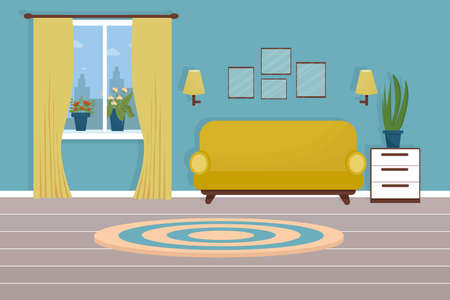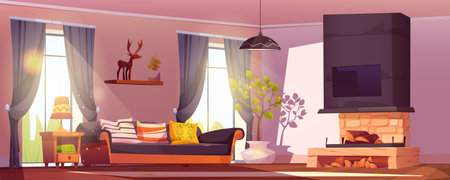Understanding Colour Psychology for Children
Colour psychology plays a significant role in shaping children’s mood, behaviour, and cognitive development. In India, where cultural values and family ties are central to parenting, choosing the right colour combination for a child’s room goes beyond aesthetics—it becomes an important element of nurturing a positive environment. Indian parents often seek to create spaces that foster learning, happiness, and emotional well-being. Scientific studies show that colours like yellow can stimulate creativity and energy, while shades of blue promote calmness and concentration. Bright hues such as orange and green are believed to encourage social interaction and balance. Traditional Indian wisdom also recognises the influence of colours in daily life, with many families turning to Vastu Shastra or spiritual beliefs when selecting room colours. By understanding how different shades affect emotions and cognitive growth, parents can make informed choices that align with both modern psychological insights and Indian cultural perspectives.
Popular Colour Choices for Kids Rooms in India
When selecting the ideal colour palette for kids’ rooms in India, families often blend modern trends with traditional preferences to create vibrant and meaningful spaces. Indian homes typically reflect a rich heritage of colours that hold cultural significance, while also embracing contemporary aesthetics popular among young parents today. Let’s explore some of the trending and culturally favoured colour combinations for children’s rooms across different regions of India.
Trending Colour Palettes
Modern Indian parents are increasingly choosing bright and cheerful shades for their childrens bedrooms, favouring colours that promote creativity, calmness, and positivity. While global influences have introduced pastels and muted tones, bold hues remain a staple due to their energetic appeal and alignment with Indian festivities.
| Colour Combination | Cultural Significance | Regional Preferences |
|---|---|---|
| Yellow & Orange | Symbolises optimism, energy; commonly used during festivals like Holi and Diwali. | Popular in North & West India |
| Blue & White | Represents tranquillity and peace; inspired by Krishna and monsoon themes. | Favoured in South & Central India |
| Pinks & Purples | Associated with joy, innocence, and celebration; often chosen for girls’ rooms. | Loved in urban metros nationwide |
| Green & Cream | Denotes harmony and growth; green is auspicious in many Indian cultures. | Sought-after in rural and eco-friendly households |
| Terracotta & Gold Accents | Reflects warmth and luxury; inspired by traditional art forms like Warli or Madhubani. | Seen in Eastern India & heritage homes |
Incorporating Traditional Motifs with Modern Shades
A unique trend in Indian kids’ room design is combining regional motifs (like elephants, peacocks, or rangoli patterns) with contemporary shades such as teal or lavender. This fusion not only celebrates cultural roots but also keeps the room visually appealing for today’s generation.
Choosing Based on Child’s Personality & Local Beliefs
Many parents consult Vastu Shastra—a traditional Indian system of architecture—when picking colours, believing that certain shades can influence their child’s well-being. For instance, soft greens are thought to boost concentration while bright reds may be avoided to maintain calmness. Thus, the final selection often balances personal preference, local customs, and psychological benefits to craft a nurturing environment for kids.

3. Vastu Shastra Guidance and Cultural Beliefs
When it comes to designing a child’s room in India, integrating the age-old principles of Vastu Shastra with modern colour psychology can create an environment that is both harmonious and nurturing. Vastu Shastra, the traditional Indian science of architecture, offers valuable insights into choosing auspicious colours for different directions and purposes within a home. For kids’ rooms, especially, parents often look for hues that not only appeal visually but also foster growth, positivity, and peace according to Indian beliefs.
According to Vastu, the direction in which a child’s room is located plays a significant role in determining the ideal colour palette. For instance, rooms in the east or north are considered favourable and are best painted with light shades such as white, green, or light blue—colours believed to promote concentration, freshness, and mental clarity. These shades are also associated with Saraswati, the goddess of knowledge in Hindu culture, making them particularly auspicious for study and creativity.
In addition to directional guidance, Indian cultural beliefs recommend avoiding dark or overly vibrant colours like deep reds or black in children’s spaces. Such colours are thought to cause restlessness or aggression. Instead, calming tones like pastel yellows, soft oranges, or even gentle pinks are widely chosen as they reflect joy, warmth, and love—qualities cherished in Indian family life.
By respecting both Vastu principles and traditional values while incorporating modern colour psychology, parents can ensure their child’s room not only looks beautiful but also supports emotional well-being and positive development. This blend of tradition and science is especially relevant in India, where cultural heritage holds immense importance in daily living and interior design choices.
4. Age-Appropriate Colour Combinations
When selecting the best colour combination for a kids’ room in India, it is essential to consider the age of the child along with cultural preferences and psychological effects. Different age groups respond uniquely to colours, and Indian traditions offer a rich palette to draw inspiration from. Below are suggestions for suitable colour schemes according to various age groups, with examples that resonate with Indian families.
Infants & Toddlers (0-3 Years)
For infants and toddlers, soft and calming hues are most appropriate as they promote relaxation and restful sleep. Pastel shades inspired by Indian elements like lotus pink, peacock blue, and cream are ideal choices. Avoid very bright or highly contrasting colours, as these can overstimulate young minds.
Suggested Combinations:
| Colour 1 | Colour 2 | Indian Inspiration |
|---|---|---|
| Lotus Pink | Cream | Sacred Lotus Flower |
| Mango Yellow | Pista Green | Mango Festival, Pista Sweets |
| Sky Blue | Ivory White | Krishna’s Peacock Feather, Temple Marble |
Preschool & Primary School (4-8 Years)
This age group is energetic and curious, making it suitable to introduce brighter yet balanced colours. Choose combinations that stimulate creativity without causing distraction. Traditional Indian motifs can be incorporated through accent walls or decor.
Suggested Combinations:
| Colour 1 | Colour 2 | Indian Inspiration |
|---|---|---|
| Saffron Orange | Aqua Blue | Tiranga (Tricolour) Flag, Holi Festival Waters |
| Lime Green | Cerulean Blue | Banyan Leaves, Monsoon Skies |
| Lavender Purple | Sunshine Yellow | Pongal Flowers, Summer Sunlight |
Pre-teens & Teenagers (9-15 Years)
Older children often prefer more personalised and mature colour schemes. Incorporating their interests while reflecting popular Indian styles—such as ethnic prints or regional crafts—can create a space that feels both modern and rooted in heritage.
Suggested Combinations:
| Colour 1 | Colour 2/Accent Shade | Indian Inspiration/Theme |
|---|---|---|
| Indigo Blue | Kumkum Red/White Patterns (Warli Art) | Dabu Prints, Tribal Murals of Maharashtra & Gujarat |
| Terracotta Orange | Tulsi Green/Beige Accents | Kutch Embroidery Colours, Courtyard Clay Tiles |
| Sandalwood Beige | Bottle Green/Rust Highlights | Sandal Paste Rituals, South Indian Temple Decor |
Cultural Tips:
Selecting age-appropriate colour combinations not only supports your child’s emotional well-being but also offers an opportunity to celebrate India’s diverse culture. Involve your child in the decision-making process for older age groups, allowing them to express their personality within a culturally meaningful framework.
5. Practical Tips for Mixing and Matching Colours
Engineering the perfect kids’ room in India requires a thoughtful approach to colour mixing—striking the ideal balance between brightness, comfort, and day-to-day functionality. Here are some practical tips that blend colour psychology with Indian realities, ensuring your choices are both uplifting and achievable.
Consider Local Paint Availability
Before finalising your palette, check what shades are easily available from leading Indian paint brands like Asian Paints, Berger, or Nerolac. Opt for colours that can be mixed or matched from standard catalogues, ensuring effortless future touch-ups.
Start with a Base Colour
Select a calming base shade such as soft cream, light yellow, or pale blue. These hues reflect natural sunlight—abundant in most Indian regions—and create a soothing environment for children’s daily activities.
Add Vibrant Accents Thoughtfully
Introduce cheerful accents using brighter colours like turquoise, mango orange, or parrot green on one wall, furniture pieces, or shelves. This engineering strategy keeps the overall vibe energetic without overwhelming the senses—ideal for stimulating learning and play.
Create Zones Using Colour Psychology
Divide the room visually by assigning specific colours to study corners (cool blues for focus), play zones (warm reds or yellows for energy), and sleeping areas (gentle greens or lavenders for relaxation). This functional zoning leverages colour psychology for maximum utility.
Mix Patterns with Solids
Balance patterned curtains or bedsheets with solid wall colours to avoid visual clutter. Traditional Indian motifs in textiles can be paired with contemporary solids, integrating culture while maintaining harmony.
Test Before You Commit
Paint small swatches on the wall to observe how colours react to changing daylight. This step is crucial in Indian homes where sunlight intensity varies greatly across cities and seasons.
Focus on Easy Maintenance
Select washable paints or finishes to handle spills and scribbles—a practical consideration in any child’s space. Opting for locally popular options ensures easy access to touch-up materials whenever needed.
Cultural Touches Make a Difference
Incorporate regional elements through art, posters, or decals—like Madhubani paintings or Bollywood-inspired prints—for a sense of belonging and cultural pride. These can be changed seasonally without repainting entire walls.
By combining scientific principles of colour psychology with real-world considerations unique to India, you can engineer a kids’ room that is vibrant yet peaceful, playful yet restful—and truly optimised for your child’s growth and happiness.
6. Sustainable and Safe Colour Choices
When designing a kids’ room in India, it is crucial to prioritise both the well-being of your child and the environment. Eco-friendly and non-toxic paints are gaining popularity among Indian households, thanks to growing awareness about health and sustainability. These paints are free from harmful chemicals like lead, mercury, and volatile organic compounds (VOCs), which can cause respiratory issues or allergic reactions—especially in children. Opting for water-based or natural paints made from organic ingredients ensures that your childs living space remains safe and healthy.
In addition to paint selection, safe decorating practices should be followed. This includes proper ventilation during painting, using child-safe tools, and ensuring all finishes are smooth and non-abrasive. In Indian homes, where joint family systems are common, it is wise to involve elders in selecting colours and materials to respect family traditions while making modern, safe choices.
Moreover, with India’s diverse climate conditions—from humid coastal regions to dry interiors—choosing moisture-resistant and washable paints not only contributes to durability but also supports hygienic maintenance. Brands that have earned eco-certifications or adhere to Bureau of Indian Standards (BIS) norms offer extra reassurance.
By integrating sustainability with colour psychology, parents can create a vibrant yet secure environment that nurtures creativity without compromising on safety or tradition. Ultimately, the right choices will help your child thrive while you contribute positively to the environment.
7. Case Studies and Real-Life Inspirations from Indian Homes
India’s rich cultural diversity is reflected beautifully in the way parents design their children’s rooms, blending colour psychology with local traditions and modern sensibilities. Let’s explore some inspiring examples and real-life success stories from across the country.
Mumbai: Urban Vibrance Meets Functionality
In a Mumbai apartment, a family chose a soothing sky blue for their son’s room to promote calmness amidst the city’s hustle. Accents of vibrant yellow were added through cushions and wall art, symbolising optimism and energy—a perfect balance for urban kids who need both relaxation and stimulation.
Bangalore: Nature-Inspired Serenity
A home in Bangalore embraced earthy greens and soft browns for a daughter’s room, drawing inspiration from nearby parks. The green walls help improve focus and reduce anxiety, while wooden furniture grounds the space, making it ideal for study and play.
Kolkata: Traditional Motifs with Modern Hues
In Kolkata, one family celebrated their Bengali heritage by combining classic red-and-white patterns with playful teal accents. The red encourages enthusiasm; the teal brings tranquility. This fusion not only reflects colour psychology but also keeps cultural roots alive for the next generation.
Chennai: Coastal Coolness
Along Chennai’s coast, a beach-themed room uses seafoam green walls with coral pink details. These colours evoke freshness and creativity, inspired by the nearby Bay of Bengal. The parents noticed that these shades made their child more energetic during playtime yet relaxed at bedtime.
Lucknow: Royal Heritage Reimagined
A Lucknow residence took cues from Mughal architecture—using regal purples paired with gold highlights. This combination fosters imagination and self-confidence, while ornate wall decals add a touch of Nawabi elegance without overwhelming the young occupant.
Delhi NCR: Minimalist Pastels for Modern Families
In Delhi NCR, many new-age parents opt for minimalist pastel palettes—mint green, powder blue, blush pink—to create a peaceful atmosphere that grows with the child. Feedback shows these subtle hues help reduce overstimulation in busy city environments.
These case studies prove that Indian families are masterfully weaving together colour psychology, regional influences, and personal preferences to create nurturing spaces for their children. With thoughtful choices and creativity, every kids’ room can become an inspiring sanctuary tailored to Indian lifestyles.


